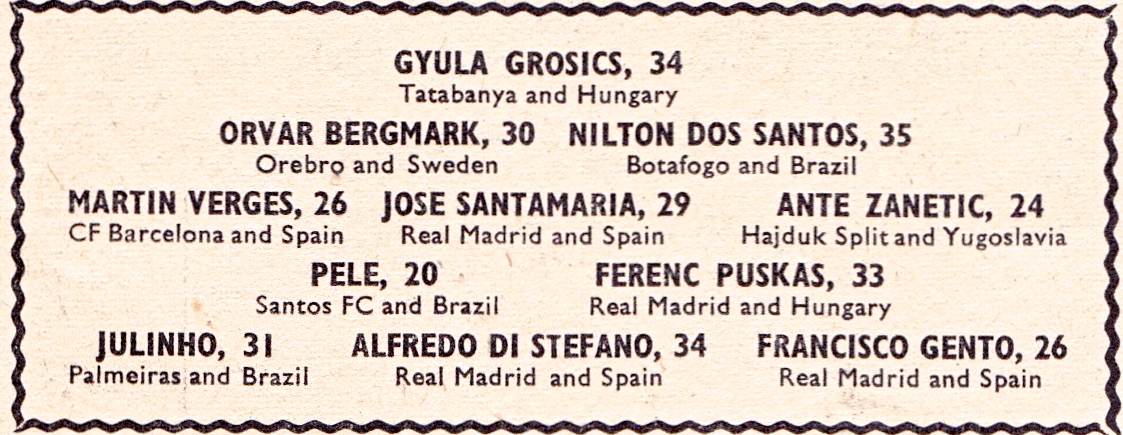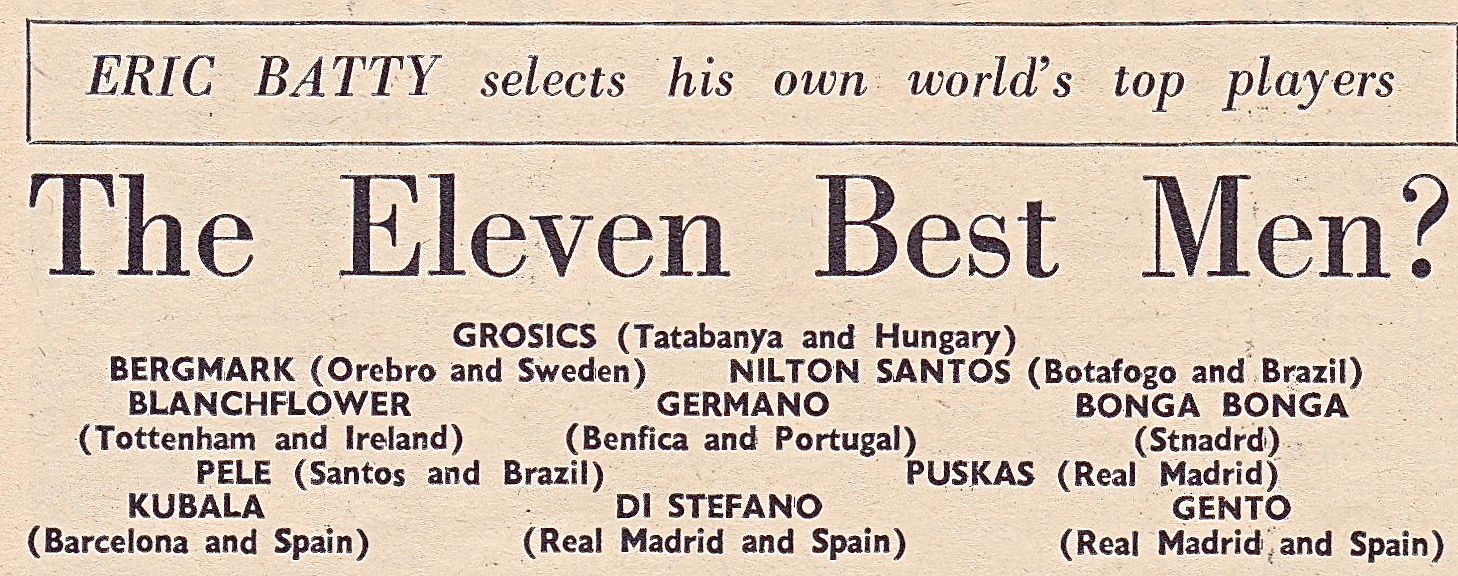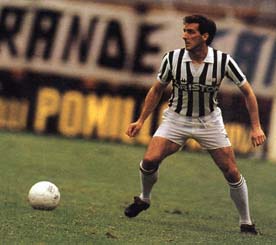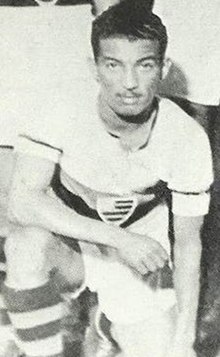Edgar Allan Pillow
Ero-Sennin
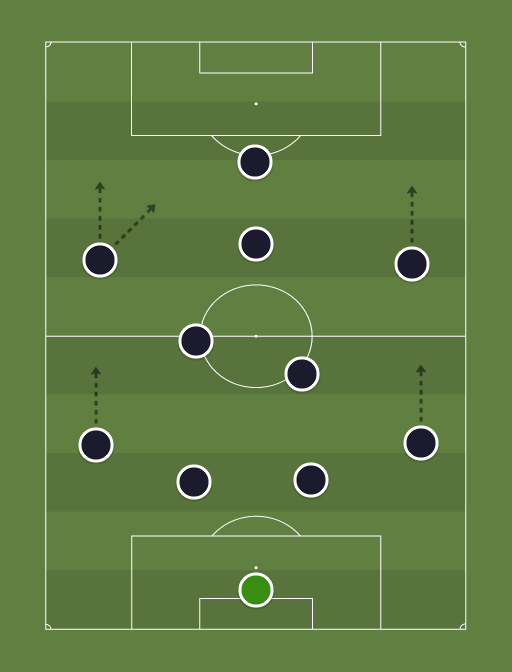

............................................. TEAM CHARLY ......................................................................................... TEAM 2MUFC0 .............................................
TEAM CHARLY
I am Playing 4-2-3-1 formation with focus on wing play and direct attacking. I am not too fussed about the possession and try to move ball quickly with a quick counter attacking threat as well.
Up top is Sandor Kocsis, the greatest header of the ball the game has seen and a very prolific striker. He is partnered with Ballon D'or winner Omar Sivori. This partnership is similar to the famous Kocsis-Puskas partnership. Sivori was an excellent link up player who formed his own great partnership with Charles. Sivori has a free role here, which would allow "The Maradona of 60s" to display his creativity & goal scoring to full extent.
Dzajic is the best winger in the draft. His role is to put on some delicious crosses for Kocsis, just like Czibor and when required cut in and score on his own. Michel is a reliable and hard working presence on the right wing to counter the flair of Dzajic. Michel is a Real Madrid legend representing them for over a decade while also earning 72 international caps for Spain. He is most known for his stellar crossing, which was Beckham like.
Van Hanegem is well known legend from Netherlands and is playing as deep lying playmaker for my team. Van Hanegem was a fantastic passer and had a great engine on him. In his time he was often compared with Cruyff in stature and creativity as they were both talisman for two of the biggest clubs in the league. He is partnered with Nestor Rossi here who is playing in a defensive midfield role. Rossi was a powerful tackler and is often considered the best Argentian defensive midfielder.
Jorginho & Demyanenko are the full backs for my team. Both excellent full backs adept in both defensive and attacking phase. Demyanenko was a great LB, he won Soviet player of the year and was voted the third best Ukrainian player of century behind Blokhin & Shevchanko. He'll be more attacking owing to dzaijic's freedom to cut inside. World cup winning right back Jorginho would be slightly more defensive in his duties. A brilliant RB who was considered one the best full back of his generation and one of the best defender to come from Brzil.
Nesta - Silva was a great partnership in Milan. Nesta is obviously one of the best defender of all time, so not much needed to say about it. There was a time when I and many others thought Silva would one day reach the same heights. That did not quite happen but he was still a damn good defender and there is also the proven partnership. Both are complete modern defenders and complement each other very well.
In GK position I have one of the all time best - Rinat Dasayev. He would round off the defense nicely for me. He also won the Soviet footballer of the year award as well getting selected as the best goalkeeper from IFFHS 1988.
TEAM 2MUFC0
Defence
In goal is Hugo Gatti: Argentine great and one of the pioneers of the sweeper keeper style. The defence is marshalled by the best defender in the pool, Gaetano Scirea: renowned for his orchestrating prowess, flawless reading of the game and ball playing skills, he should be perfectly at home in the setup. To his left is Italian stopper, Riccardo Ferri: a tough tackler as well as presence in the air, he should be a seamless fit considering his understanding with a Scirea-esque defender in Baresi. At right back is Swedish great, Orvar Bergmark: a balanced full back in defense in attack, he was an integral part of the 1958 WC runners up team, was twice elected to the World XI and will primarily deal with Dzajić. On the opposite side is Leovegildo Junior: one of the most complete fullbacks in football history, he adds another dimension of playmaking to go with a stable and consistent defensive game.
Midfield
Obdulio Varela is the best pure defensive midfielder in the draft in the absence of Rijkaard and Desailly. Here he will provide solid screening in front of the defence - allowing the more creative players to get forward while also bringing immense leadership nous to the fold considering his stature as one of the greatest captains of all time. Alongside him is Juan Sebastian Veron: fantastic on the ball and under pressure, he can be an outlet for Zizinho and Varela.
Brazilian maestro Zizinho will be the flair player in midfield: creating chances for the attackers with precise passes and bamboozling dribbles - as well as getting into scoring positions playing off the lead striker.

Attack
Gunnar Nordahl is the clinical battering ram spearheading the attack - pouncing in the box - ready to score, and using his hold up play able to link up effectively with the other attackers.

The Snakeman, Rob Rensenbrink will be on the leftside of the attack: a two time Onze de Bronze winner, he was an intelligent left footer with a fantastic touch - tall enough to be used as a traditional centre forward yet possessed a great dribbling technique that meant he could also play out wide, where he was more than capable of leaving 2 or 3 defenders bamboozled in his wake.
Completing the XI is another Dutchman - and someone who epitomized the ethos of totaalvoetbal, Ruud Gullit: who has the freedom to roam around the right side of the midfield, and using his physical presence and intelligence and dribbling ability to link up with Nordahl and Zizinho.


